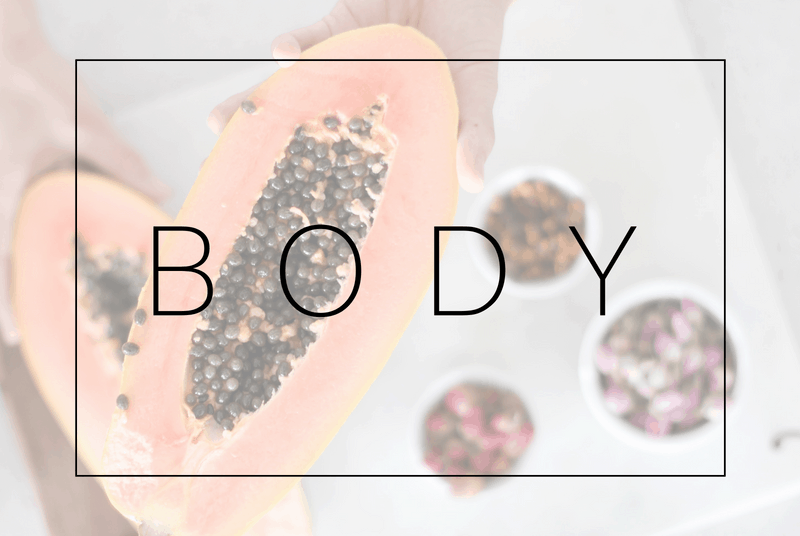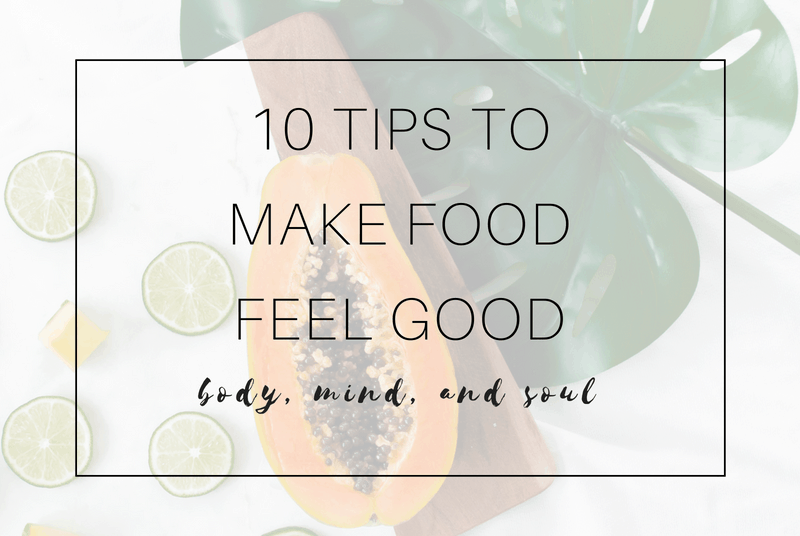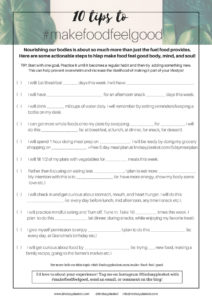What does it mean to Make Food Feel Good?
Whenever I’m creating a recipe or sharing information on here, I always bring it back to these four words. This is going to mean something a little different to everyone, and I want to encourage you to embrace that!
Giving ourselves permission to listen to what we enjoy, what energizes us, and what makes us feel good – body, mind, and soul, is what gives meaning to that ambiguous “balance” that we’re all striving for. (I’ve created a little checklist with simple, actionable steps to help you implement this – you can download it here!)
I thought this was a good time to touch on this, because every summer I end up with clients coming to me feeling frustrated that they’ve “fallen off track” with their eating, or feeling guilty about too many patio drinks or meals out. Like they need to justify what they’re doing and when it will stop.
First off…let’s ditch the morality when it comes to food – there are no good or bad foods, and you are not a good or bad person for eating, or not eating these foods! Got that? Your food choices don’t get to dictate what kind of a person you are!
So I want to talk a little about the three pillars that set the foundation for a feel good relationship with food and how shifting your perspective and intention can make it a bit easier to find balance no matter the season.

BODY: Being a dietitian, I find that initially, this is why people come to me. They want to know what to eat, what not to eat, and how to do it. I am absolutely passionate about the power food has to help us feel our best. Nourishing our cells from the inside out with nutrient dense, colorful, whole foods and doing so regularly throughout the day sets this foundation. Here I like to focus on simplifying the process to help you cook more from home in a way that you and your family will LOVE AND ENJOY!

MIND: Without an understanding of why we eat and how it makes us feel, a preoccupation with what we eat can feel like a constant battle. One of the best tools I’ve come across for fostering a feel good relationship with food is from a course called Craving Change which identifies the three different types of hunger.
Stomach Hunger
Mouth Hunger
Heart Hunger
Stomach hunger being physical hunger when your body needs more fuel, Mouth Hunger being a craving for a certain taste, texture, or eating experience, and Heart Hunger being driven by emotion.
Tuning into this is not meant to trigger guilt but rather to empower us with more information and understanding of what will truly satisfy our needs.

SOUL: This might not be something you automatically think of when it comes to food and nutrition, but it is equally important in setting the stage for balance.
Giving ourselves permission to enjoy food for more than just fuel allows us to connect more deeply to ourselves and the world around us, and I’m learning more and more just how key connection is for a full life!
Whether this is incorporating mindful eating – noticing and enjoying the smells, tastes, textures, and overall experience of eating, learning about a new culture and trying new foods when traveling, being curious about your own family recipes and traditions, or supporting your local economy and the environment by buying local and seasonal foods right from our own backyards – food can bring so much joy and meaning to our lives!
As wonderful as I’m sure all this sounds, I know it it can all feel a little overwhelming or intangible at times, so here are 10 of my favorite ways to apply these three pillars and move towards making food feel good body, mind, and soul. If you try any of them out I would love to hear about it! Tag me on Instagram @lindsaypleskot and use #makefoodfeelgood and let’s spread the feel good food vibes! If this is something you struggle with, let me know how I can help out!
And don’t forget to download the checklist that will help you implement the tips below!
If you’re looking for guidance and support on how to create a lifelong feel good relationship with food, I’d love to support you! Check out the Make Food Feel Good Program here for more information on how I can help!
1.Eat Breakfast.
Might sound basic but it’s often skipped. Eating breakfast helps to regulate your appetite for the rest of the day.
How: Here are a few of my faves! Chia Pudding, Overnight Oats, Muffin Tin Fritattas, and Avocado Toast.
2. Add a Daily Afternoon Snack.
A snack during our longest stretch of the day – between lunch and dinner can prevent hanger cravings and improve mood and energy throughout the afternoon.
How: Try one of these: Lemon Energy Balls, Fererro Rocher Energy Balls, Baked Chickpeas, Beet Hummus or a simple apple and small handful of almonds is one of my favorite go tos.
3. Hydrate.
Being dehydrate is one of the quickest ways to zap energy and concentration but unlike meals, we don’t have set times to drink up. See my tips below to help you remember to drink up!
How: Use an app or set a reminder to go off every few hours on your phone, or keep a water bottle out on your desk as a visual reminder!
4. Enjoy Whole Foods.
Eating foods as close to their natural state as possible allows you to get the most nutrition out of them and generally provides longer lasting energy and fullness.
How: Swap your regular snack bars for one of the snacks listed above or set a goal to cook one more meal from home this week.
5. Plan ahead.
Just 1 hour of weekly meal prep will put you way ahead of the game! Having the food in the house and ready to go will make it much more likely that you’ll follow through!
How: Download this free 5 day meal plan for a step by step on how!
6. Balance your Plate.
There’s an ultimate combo that helps us feel satisfied after a meal, and stay full and energized longer. *Note: this may vary from person to person, modify to suit your needs.
How: Follow the Plate Model – Aim to fill ½ your plate with colorful veggies, ¼ plate with protein, ¼ plate with whole grain carbs and finish with some healthy fats for a satisfying meal. Not every meal will look like this, and that’s ok! See how you can lean towards this balance for one of your meals this week and note how it makes you feel!
7. Have Intention.
Approach food from a place of abundance vs. lack.
How: When setting goals/intentions, focus on what you want to get more of vs. what you can’t or shouldn’t eat. Ex: Adding more veggies by adding a handful of spinach to your morning eggs, or getting more balance by making sure you’ve got a protein at lunch.
8. Check In.
Get curious about what the different types of hunger feel like and what ultimately satisfies each.
How: When you notice yourself thinking about or reaching for food, ask yourself “Is this stomach, mouth or heart hunger?” Take note of the thoughts and feelings (mental and physical) that come up.
9. Be Mindful.
Take time to be present while you eat. This usually lends to improved digestions, a more satisfying meal, and a better overall realtionship with food. *Note – this may not be the case just yet if you are recovering from disordered eating. Discuss with your dietitian if you need additional support.
How: Turn off – turn off distractions like your TV, phone or computer. Tune in – tune in to the flavors, textures, smells, and eating environment. Take 10 – give yourself permission to take at least 10 minutes to enjoy your meal. No matter how busy you are, I promise you will leave feeling more recharged and refreshed!
10. Practice Permission.
The more we resist or try not to think about something, the more extreme the opposing reaction is likely to be. Remember, there are no good or bad foods. See how a shift in intention can make a difference.
How: The next time you’re craving your favorite food, give yourself permission to eat and enjoy it. Eat it mindfully and let go of any guilt you may feel. Notice how this feels different.
Bonus: Get Curious.
Curiosity is the doorway to new experiences, learning, and growth! Getting curious about our food is a great way to find more connection to ourselves and our communities!
How: Try a new food. Ask your parents or grandparents about a favorite family recipe. Recreate a favorite dish you had traveling.
I know we all like a little action steps to put these tips into action so I created a checklist for you that you can print out and write your goals right on to!
Click here to download the checklist!
Happy Eating!
xo Lindsay
LIKE THIS RECIPE? SHARE IT WITH SOMEONE YOU KNOW WILL LOVE IT TOO!











Vinciane Pepin says
Hello, I would like to try the receipe “Healthy Energy Ferrero Rocher Truffle” but where can I fin the Moon Deli Cacao Chaga Cordyceps in North Vancouver ?
Thanks
Lindsay says
Hi Vinciane!
I’m not sure where they carry it in North Vancouver. I got mine from SKC clinic in Yaletown, you can order online from them as well! This company has actually changed their company name to Mood Beli. If you go to their website there should be a store locator and if not they should be able to help you out with where they’re stocked! hope this helps!
Teresa Toth says
Body, mind, and soul! What an awesome approach to have with food and nutrition!
Lindsay says
Thank you Teresa! I want food to feel good around here, not just about the nutrition. That can get so stressful!
Megan says
Great read! Love how you incorporated the Mind, Body, and Soul aspect of food 🙂
Lindsay says
Thank you Megan! So happy you enjoyed it! They’re all such important pieces of feeling good about food!
Charissa Morgan says
Very cool! I love your break down. I struggled with disordered eating in my youth/early twenties and I think that this approach is a very healthy outlook on food. Our relationship with food is often one we don’t nuture and take for granted. As a personal trainer I am always disheartened by the guilt my clients have for “getting off track”. I actually already pitch the advice of: if your going to eat it (chosen “bad treat”) sit and enjoy it, and choose not to feel guilty because, like you say, there is no bad food. —Plus let’s be realistic, life’s worth living! Enjoyment comes in many ways 🙂 Overall consistency is key and checking in with how things make us feel is a great gauge if we are on track.
Lovely post. 😉
Lindsay says
I’m so happy you found this helpful Charissa! There can be so much pressure to do everything “right” but it’s really about what feels good to YOU and there are so many little things we can do that all add up to making food feel good and more enjoyable on all fronts!
Charissa says
Hi Lindsay
I’ve tried to download the file but it just brings me to this page; I’m not sure but maybe the links broken?
Thanks!
Lindsay Pleskot says
Hi Chrissy! Thank you for letting me know! Sorry about that the link, is now updated and will work! I hope you find the checklist helpful!